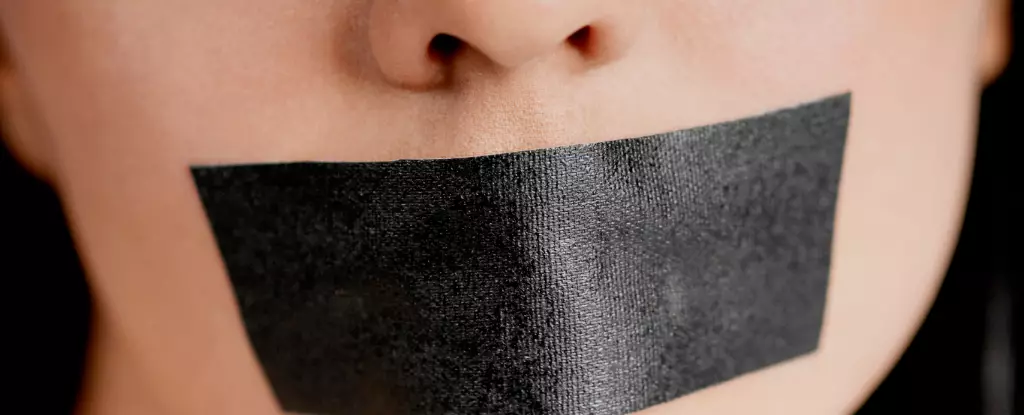Sleep disorders are increasingly being recognized as significant contributors to various health issues, particularly cardiovascular diseases. Among these disorders, sleep apnea stands out due to its complex and often misunderstood nature. While the consequences of poor dietary habits and sedentary lifestyles are well-documented, the implications of sleep apnea extend far beyond shallow breaths during the night. This article explores the risks and alternatives associated with sleep apnea treatment, with a particular focus on the burgeoning trend of mouth taping.
Sleep apnea is characterized by repeated interruptions in breathing during sleep, commonly due to airway blockages. These interruptions can lead to fragmented sleep patterns, elevating the risk of heart disease, stroke, and even diabetes. With rising awareness about the condition, attention has been drawn not only to traditional treatments like CPAP (Continuous Positive Airway Pressure) machines but also to less conventional methods like mouth taping. However, the effectiveness and safety of these alternatives warrant careful scrutiny.
CPAP machines remain the gold standard for sleep apnea treatment, providing a steady airflow to keep the airways open. Despite their proven efficiency, numerous users struggle with adherence due to discomfort, bulkiness, and the psychological burden of wearing a mask. Studies reveal a concerning trend: nearly 50% of patients abandon CPAP therapy within three years. This reality has led individuals seeking alternatives to consider methods that appear less invasive or more financially accessible.
On the other hand, mandibular advancement devices (MADs) function by adjusting the position of the jaw to prevent airway collapse. While these devices can bring relief, they often come with side effects, such as mouth soreness and jaw pain. They are generally effective for individuals with mild to moderate sleep apnea but fall short for those with more severe cases or additional health complications like obesity.
Mouth taping, a practice gaining traction among wellness enthusiasts, involves sealing one’s mouth to encourage nasal breathing. Proponents claim that this method minimizes airway obstructions by forcing airflow through the nose. While this concept holds theoretical promise, the empirical evidence surrounding mouth taping is mixed at best.
Recent studies suggest that while some participants experience improved airflow, others may see a reduction, highlighting the personalized nature of sleep apnea treatment. The simplicity of mouth taping is appealing; however, the lack of rigorous scientific validation raises significant concerns about its universality and effectiveness.
The allure of mouth taping can overshadow its possible dangers. For individuals with respiratory conditions or those prone to vomiting, sealing the mouth can exacerbate health issues. Such practices can lead to inadequate oxygen intake and carbon dioxide retention, which are particularly concerning for anyone with an existing respiratory ailment. Moreover, should aspirations occur—especially in cases of vomiting—serious complications such as aspiration pneumonia may arise.
Beyond life-threatening risks, mouth taping poses less immediate but equally bothersome issues, such as skin irritation. The skin surrounding the mouth is notably sensitive, housing a higher concentration of nerve fibers than other body areas. This sensitivity can lead to dermatitis, folliculitis, or skin stripping, rendering the practice not just uncomfortable but potentially harmful over time.
For individuals suffering from sleep apnea, the key lies in exploring alternatives that are backed by stronger scientific evidence. Consulting healthcare professionals for a tailored plan remains critical. Treatments may range from lifestyle interventions—like weight management and positional therapy—to other non-invasive devices that address airway blockages without the risks associated with mouth taping.
Engaging in regular physical activity, improving sleep hygiene, and considering supervised sleep studies are crucial components of effectively managing sleep apnea. Moreover, continued research into innovative solutions, such as dental appliances or positional therapy, is essential for providing broader access to safe and effective treatments.
While the quest for an easy fix for sleep apnea is understandable, the potential risks associated with mouth taping should not be overlooked. Without robust clinical backing, it is crucial to prioritize established treatments and consult medical professionals. Ultimately, tackling sleep apnea needs a multifaceted approach, one that accounts for individual variations, lifestyle changes, and, above all, safety. The simplest solutions are not always the best ones, especially when it comes to our health.


Leave a Reply